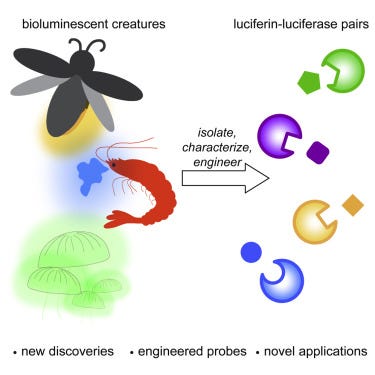
If the disappearance of birds in spring makes for a “silent spring” then the disappearance of fireflies (family Lampyridae) makes for a dark summer. Fortunately, a silent spring did not come after Rachel Carson made an epic story about the risk to song birds. Unfortunately, a dark summer has become a reality with a drastic loss of fireflies.
As I visited my home this summer in North Carolina where the night was always filled with “lightening bugs” some thirty years ago, there were none, now. The reality of their declining populations had left not only the sky, dark; but our hopes of seeing them again without major changes in the environment. I remember showing my children the joy of catching fireflies and watch them glow in your hand for a moment before releasing them back into the night sky, but that will not happen for their children.
Why are the fireflies disappearing?
The fireflies are actually beetles. There are some that do not glow. There are some fireflies that are nocturnal and some diurnal. There are at least 170 species of fireflies in the U.S., and all seem to be at risk.
Causes typically attributed to firefly decline have been toxins in the environment, decreasing habitat and light pollution.1
Because the larvae of fireflies are at the edge of water, they can be exposed to excessive phosphates that comes from runoff. Destruction of habitat comes from development and loss of wetlands. Light pollution interferes with the fireflies’ communication method, and without communication to find a mate, there are no matings.2
A decline of fireflies is seen globally.3
One in three species of the 170 species in the U.S. and Canada are threatened with extinction and within ten years, this is likely to occur absent intervention.4 Already an unknown number of species of fireflies have become extinct.
Efforts to protect the firefly were started in 2019 with petitions to compel the Department of Interior (DOI) to list one species of firefly species as endangered.5 Then in 2021, litigation to act on those petitions after DOI made a determination but failing to act to list the species within the 12-month window.6 So far, no firefly species are on the Endangered Species List. 7
Bioluminescence and Technology
We are losing more than a memory of summer when we lose fireflies. Beyond their use as natural biological controls of certain land snails, they have inspired technology of lighting.8
Bioluminescence is produced with the insect’s enzyme luciferase (easy to remember its derivation from Lucifer), when oxygen and other elements transform the enzyme to luciferin, releasing its light for a fraction of a second.9
The amount of heat that is produced from energy required to produce light is the amazing balance found in the firefly. It uses 90% of its energy to produce light and only 10% is lost to heat, while light bulbs may use only 10% of its energy for light, losing 90% to heat.10 Losses of heat at that magnitude would be deadly for a living organism, creating too much heat for it to survive. So we have much to learn from the firefly.
It is not that easy to find that balance. The failed glowing plant funded by the crowdfunding platform, Kickstarter, could never achieve the level of energy needed to produce light. There is still work underway to produce glowing trees that could light up a street, replacing street lights.11
There are other examples of bioluminescence in nature, like the glow on the surface of the ocean at night from a host of dinoflagellates. The glow worm is another example.12
Why we should care about fireflies
In 1949, Aldo Leopold wrote “A Land Ethic” in his book, A Sand County Almanac, which outlined some of the most quoted environmental ethics. One of these affirms the right of nature to its continued existence.13 This creates an obligation to not destroy nature, which means less water pollution, less air pollution and smarter development.
Indigenous traditions hold we are all part of the earth and every loss effects all of us. Respect for all parts of the environment reflects that philosophy. Aldo Leopold was the first to introduce that concept into western philosophy of environmental ethics.
The firefly is a sentinel warning about the condition of our world, and when we see its decline that is an indication of an unsafe environment for the rest of us.
As summer comes near its end, the firefly at least in my part of the U.S. is missed.
When we lose fireflies it does not just disappear — it effects everything.
https://www.nps.gov/subjects/nightskies/newworldatlas.htm (graphic).
https://www.treehugger.com/why-are-fireflies-disappearing-4868708#
https://journals.plos.org/plosone/article?id=10.1371/
https://journals.plos.org/plosone/article?id=10.1371
https://biologicaldiversity.org/w/news/press-releases/lawsuit-launched-protect-fireflies-bees-poppy-under-endangered-species-act-2021-01-07/
https://biologicaldiversity.org/w/news/press-releases/lawsuit-launched-protect-fireflies-bees-poppy-under-endangered-species-act-2021-01-07/
https://ecos.fws.gov/ecp/report/species-listings-by-tax-group (then search for “insects'“).
https://sensing.konicaminolta.us/us/blog/living-light-is-there-a-future-for-bioluminescence-technology/
https://www.sciencedirect.com/science/article/pii/S2451945620302956 (graphic).
https://education.nationalgeographic.org/resource/bioluminescence/
https://sensing.konicaminolta.us/us/blog/living-light-is-there-a-future-for-bioluminescence-technology/
https://education.nationalgeographic.org/resource/bioluminescence/
https://www.aldoleopold.org/about/the-land-ethic




